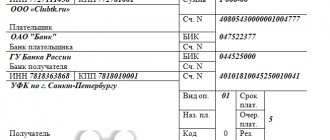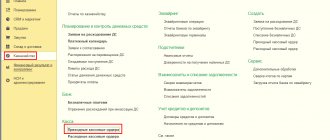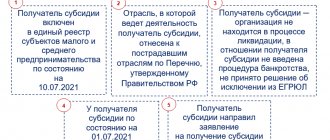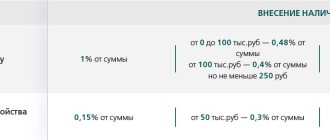The concept of cash discipline
Cash discipline of a company or entrepreneur is the procedure for conducting cash transactions. All cash payments (payment of salaries, acceptance of payment for products or services, transfer of proceeds to a current account, etc.) must be carried out through the enterprise's cash desk.
Each operation must be correctly executed with the appropriate type of document, otherwise there will be confusion in the income and expenses of the business. An accountant, a cashier, and in small enterprises a director usually works with such documents.
Cash documents
When conducting any financial transaction involving cash, it is necessary to fill out one or more cash documents. Let's consider each of them separately.
Cash book
Information about the movement of funds through the cash register is entered here. Entries are made sequentially, in accordance with the amounts in the orders. Example: an accountant withdrew money from a company account to pay wages in cash and issued the funds to employees on the same day. Accordingly, for this day in the cash book there will be entries about the receipt of money and about their payment for the same amount.
The law allows you to keep the register electronically; accounting programs are usually used.
Book of accounting of accepted and issued funds
A register should be created only if the organization employs not one, but several cashiers who exchange cash with each other. For example, a senior cashier in a supermarket at the beginning of the shift distributes small change bills to the other cashiers. This financial transaction, as well as any other movement of funds, must be reflected in the Book.
Account cash warrant
The order reflects any expenditure of money - the issuance of funds for the purchase of stationery, payment for housing and communal services, the calculation of wages, etc. In the cash register you need to indicate not only the amount and purpose of the money, but also the full name of the recipient, who once again enters the amount received into the order with his own hand and puts signature confirming that money was given to him.
Receipt cash order
This order confirms the receipt of money at the cash desk of the enterprise. Companies and individual entrepreneurs with a small flow of cash payments can issue PKOs for each transaction per day, and large retail outlets - based on the amount of revenue per shift. The PKO indicates the date, amount, basis for depositing funds, and who is depositing the money.
In most cases, the order is filled out using information from checks for a shift or from the final report on checks for the entire working day.
Payroll
This document is drawn up when the company has many employees and they all need to be paid wages. In order not to draw up a separate expense order for each person, a payroll slip is used for the entire amount of cash. This document contains the full name and position of each employee, the period for which wages are paid, the amount of accruals and tax deductions.
Rules for maintaining cash documents
It is prohibited to make corrections - you will have to fill out a new form again without corrections.
Every day, an accountant or cashier must check whether the amount of money in the cash register matches the amounts in the cash documents.
The shelf life of cash documentation is from 6 years; this period should be counted not from the date of execution of the order, statement or book, but from the beginning of the year following the preparation of the document.
You might also be interested in:
Online cash registers Atol Sigma - how to earn more
How to make a return to a buyer at an online checkout: step-by-step instructions
MTS cash desk: review of online cash register models
Scanners for product labeling
Shoe marking for retail 2022
Online cash register for dummies
Did you like the article? Share it on social networks.
Add a comment Cancel reply
Also read:
Who can work without an online cash register?
Can individual entrepreneurs operate without an online cash register in 2022?
Which entrepreneurs were given a temporary deferment and which were given a permanent deferment? Which businessmen have benefits, and how to get them? These questions concern many entrepreneurs. At the moment, the vast majority of enterprises have already switched to using cash register equipment when selling goods and services, since, according to Federal Law, almost all categories of business are obliged... 803 Find out more
The complaint book has been cancelled: handling complaints in 2022
The complaint book has been canceled since the beginning of 2022.
Already on January 1, changes to the rules of retail sales began to take effect. One of the innovations was the abolition of the book of complaints and suggestions for consumers. From now on, retail outlets are not required to have a complaint book. Accordingly, the presentation of this book at the request of the client now remains at the discretion of the owner. However, the legislation does not propose a similar replacement for the complaint book... 1091 Find out more
How and who to keep a cash book in 2022
The cash book in 2022, as before, is drawn up by business owners who have cash turnover.
Moreover, it is carried out alone, even when using several types of activities and different tax regimes. Let's consider how to correctly fill out the cash book in 2022 and what data is reflected in it. Accounting for the simplified tax system Comprehensive accounting for the simplified tax system Turnkey income for small and medium-sized businesses... 403 Find out more
Cash settlement limit
According to the latest changes to the Tax Code, registered individual entrepreneurs and companies can pay ordinary citizens in cash for any amount. And when dealing with cash between individual entrepreneurs and companies, organizations, entrepreneurs, you must adhere to a limit of 100,000 rubles per agreement. The exception is the following calculations:
- payment of wages to individual entrepreneurs' employees;
- customs payments;
- issuance of accountable funds.
The restriction applies not only to one-time payments, but also to the accumulative system. For example, an LLC receives 7,000 rubles daily from one individual entrepreneur for services rendered, but as soon as the amount of payments reaches 100,000 rubles, it will need to switch to non-cash payment. Also, the limit will not be affected by the duration of the contract - if the LLC is late in paying the individual entrepreneur for goods, then in order to receive the balance of the debt in the amount of more than 100,000 rubles, several new contracts will need to be concluded.
Compliance with the limit is monitored by the Federal Tax Service, and violators face a fine.
Issuance of money on account without statements
Amendments have been made to clause 6.3 of the Procedure for conducting cash transactions. Previously, the issuance of money on account (for expenses related to the activities of an organization or individual entrepreneur) was carried out strictly on the basis of an application from an employee. For example, in order to purchase office supplies or equipment for a company, an employee had to write an application in any form. The application must contain a record of the amount of cash, the period for which it is issued, as well as the signature of the head of the organization.
Now an application for the issuance of accountable amounts is not required. Money can be given to an employee from the cash register, or transferred to his “salary” card on the basis of an administrative document. The Central Bank does not specify what such a document is. Accordingly, money can be issued based on any order of the organization’s management. For example, an order from a director to send an employee on a business trip. At the same time, as before, employees will be able to receive accountable money based on their application. The amendments leave this possibility.
Cash balance limit
At the end of the working day, there should be no more cash left in the cash register than a certain amount - the established limit. Anything that exceeds this amount must be transferred to the bank. The exception is payroll days and non-working days when cash transactions were carried out.
The limit is determined by each company independently; by default it is 0 rubles, that is, all cash at the end of the day must be deposited into the account. Violation of this rule may result in a fine.
How can a business calculate its cash limit?
The amount of cash on hand can be calculated using the following methods:
1. Based on the amount of payments from the cash register. This method is convenient for companies that often pay suppliers in cash. The formula used for calculation is:
Cash limit = Issue amount / Receipt period x Receipt payment period , where:
- Issue amount - the amount of cash issued from the cash register for a certain period. This does not include salaries and other employee benefits. A newly incorporated business can set its own cash flow expectations.
- Receipt period - the period between receiving funds from a bank account and issuing them from the cash desk. This does not include salaries and other employee benefits. The maximum value for this parameter is 7 days.
- Payment period is the period for which the amount of cash paid is taken into account. Maximum - 92 days.
Example:
The Stroy organization is engaged in the wholesale sale of building materials and accepts payment only to a bank account. However, from time to time the organization needs to pay for the services of carriers in cash, so Stroy withdraws funds from the bank for such payments. To calculate the cash balance limit for the next year, it was decided to take the most active period this year - October. This month, the organization worked for 24 days and in total withdrew 256,000 rubles from the account to pay carriers. The accountant received funds from the bank every 3 days. The limit value can be calculated as follows:
256,000 rubles / 3 days x 24 days = 32,000 rubles.
2. Based on the amount of cash receipts. To calculate the cash limit, the following formula is used:
Limit = Revenue / Due date x Receipt deadline , where:
- Revenue is the amount of cash received for products or services for a certain period. If a company or individual entrepreneur has just registered, then the expected amount is taken.
- The due date is the time between the receipt of cash and the sending of cash to the account. The maximum can be 7 days.
- Receipt period is the period for which the amount of receipts is taken into account. You can take up to 92 days.
Example:
The Aero organization sells office supplies. At the end of the year, the director gave instructions to calculate the cash balance limit for the next year, for which we took data for November. This month, Aero worked for 23 days and received 564,000 rubles in cash, funds were sent to the bank every 3 days. The balance limit can be calculated as follows:
564,000 rubles / 3 days x 23 days = 73,565 rubles.
After the limit has been calculated, the head of the enterprise needs to issue an order approving this amount for a certain period (for example, until the end of the year) or without specifying a period (then the limit will be valid until the approval of the next order).
Issuance of money on account at any time
Amendments have been made to clause 6.3 of the Procedure for conducting cash transactions. Before the changes were made, issuing money to an employee who did not report on the previous report was fraught with a fine under Art. 15.1 Code of Administrative Offenses of the Russian Federation.
The accountable person was obliged, no later than three working days after the expiration of the period for which the money was issued against the report, to present to the chief accountant an advance report with attached supporting documents. The report was checked by the accounting department and approved by the head of the organization. After this, the final payment was made. At the same time, the issuance of new money on account was possible only if the accountable person fully repaid the debt on the previously received amount.
This rule has now been abolished. The presence of debt on the part of an employee is no longer an obstacle to issuing new sums of money on account. To issue them, it is enough to issue an administrative document. Meanwhile, it is still not recommended for employees to accumulate debts. The fact is that inspectors (IFTS and Social Insurance Fund) can regard such debt as the employee’s income and charge additional insurance premiums and personal income tax on it. Therefore, it is better to repay debts on accountable amounts in a timely manner and without delays.









